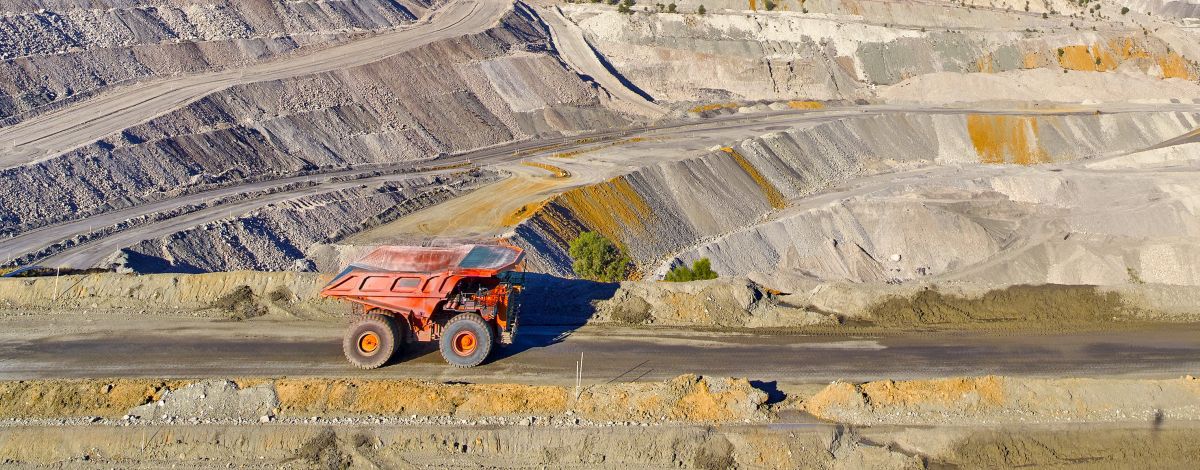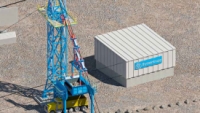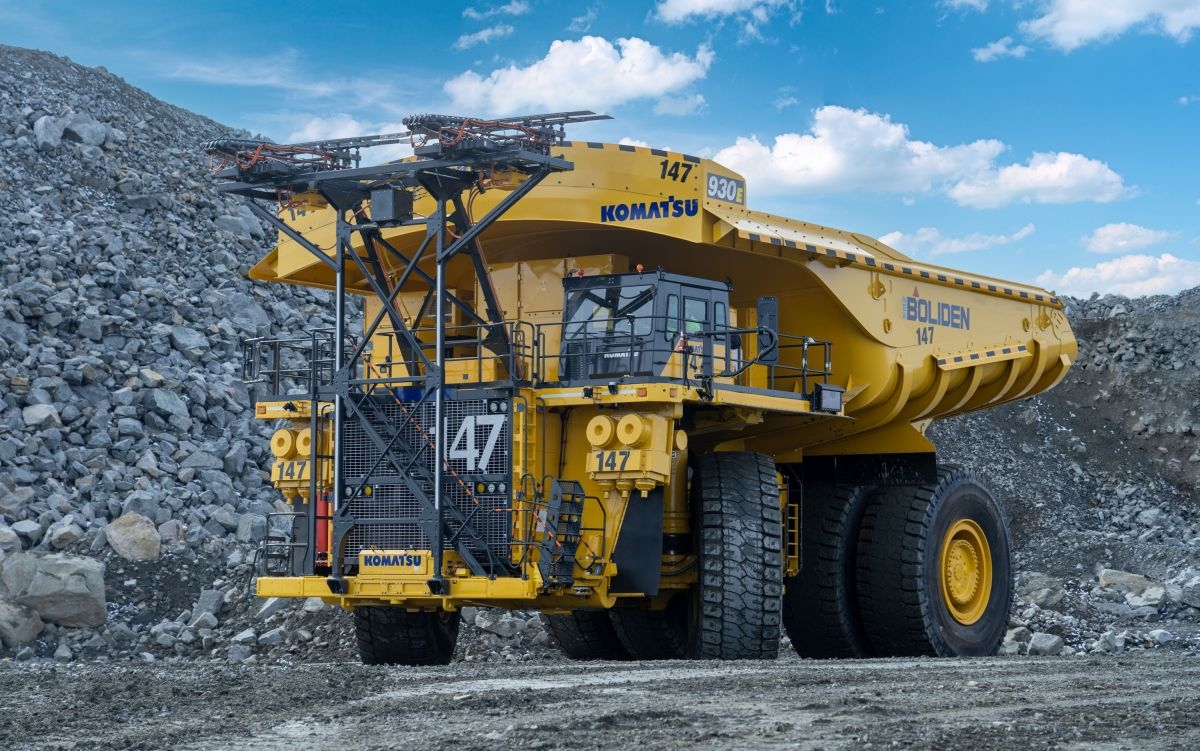Future of haulage and materials handling in mining
22.10.2025Traditional methods of moving material from pit to plant are being re-evaluated, as mines look for technologies that deliver high performance with greater flexibility – while reducing costs and carbon footprint.
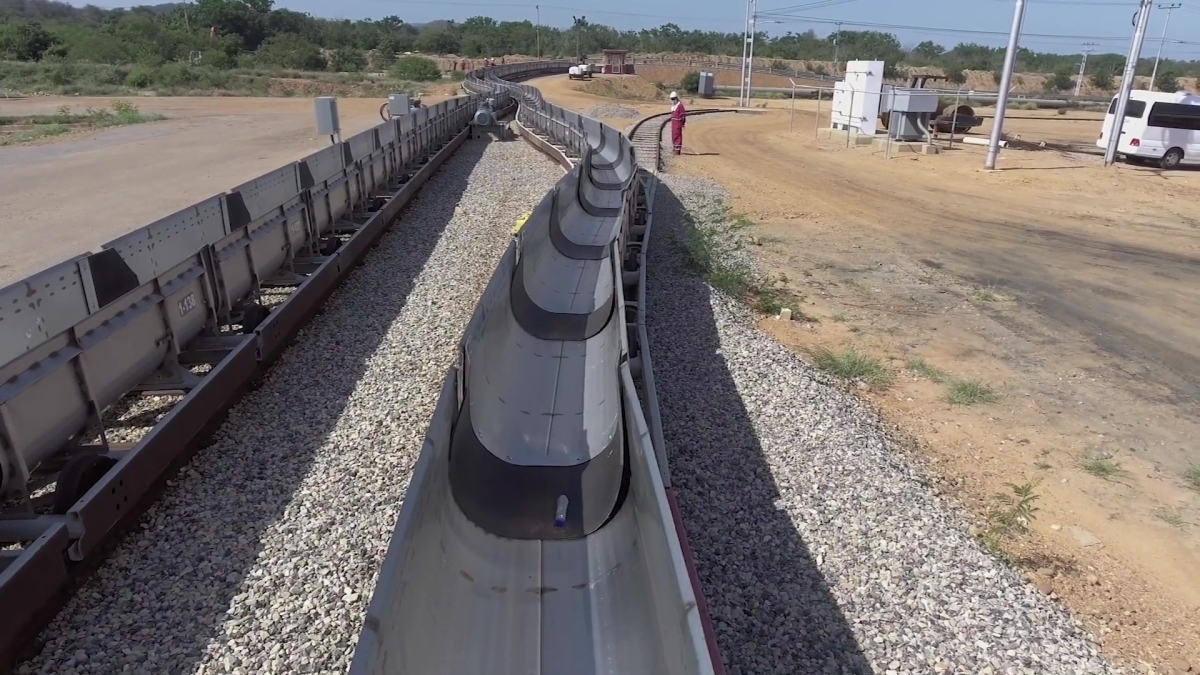 Railveyor system at a mine
Railveyor system at a mine
© Railveyor
Haulage and materials handling account for a significant share of both the capital and operating costs of any mining operation, making them a key focus for cost-control strategies. At the same time, leading companies in the sector have committed to net zero operations by 2050, in line with the objectives of the Paris Agreement. This means that the future of materials handling will have to be greener and more efficient than the currently dominant methods allow.
Diesel-powered trucks have been a cornerstone of mining for many decades, but the growing focus on sustainability means finding alternatives, with lower carbon emissions. Volatility in diesel pricing also complicates a mine’s efforts to reliably forecast their costs – adding uncertainty to the project’s viability and profitability models. For underground operations, diesel fumes pose a direct health risk and require extensive and costly ventilation to extract heat and emissions to ensure a safe working environment.
Other traditional methods include rail systems and belt conveyors, which can be applied where the haul route is relatively less complex in terms of gradients and curves. These options generally lack flexibility, as they are costly to install and difficult to relocate.
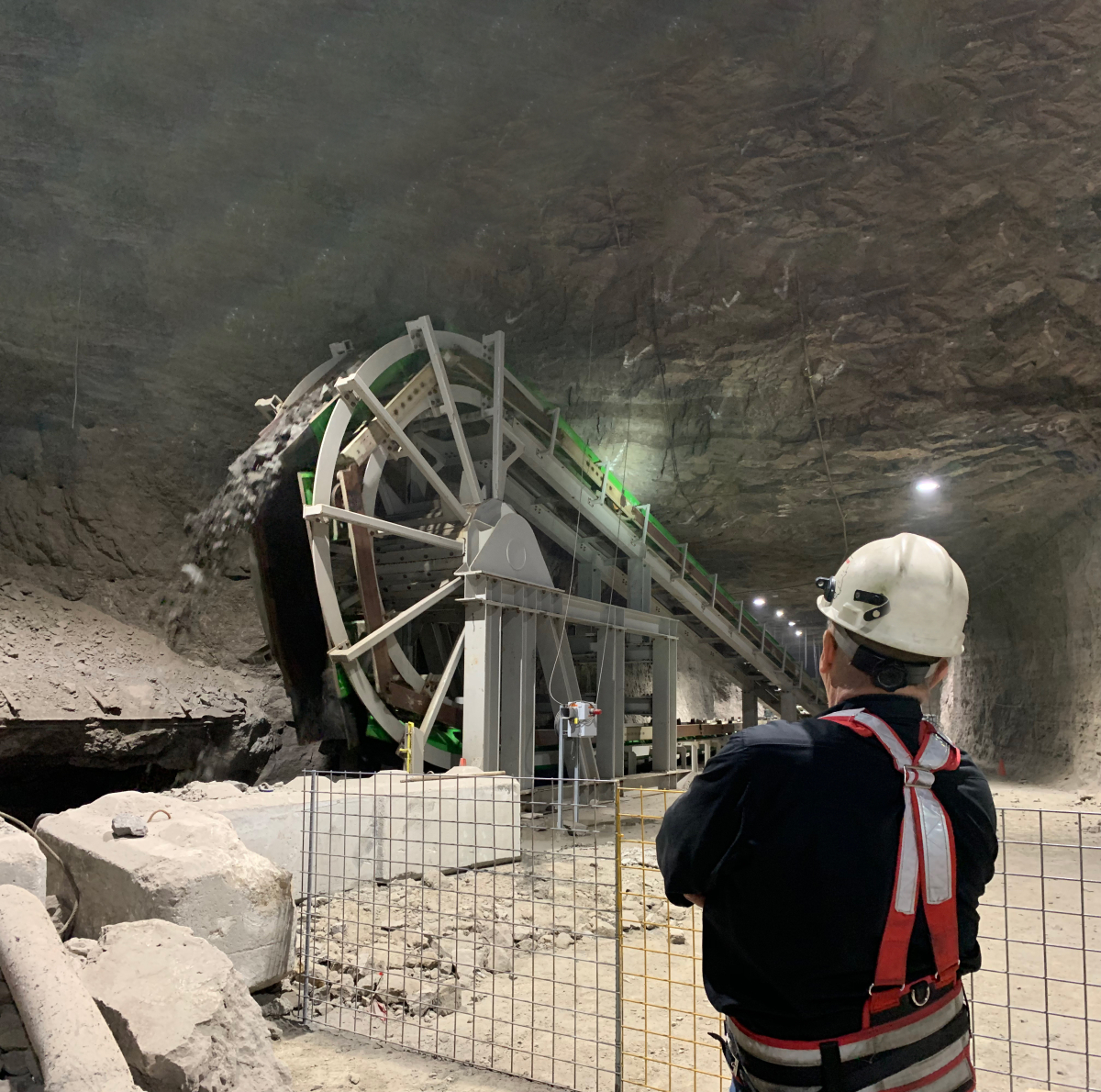 Discharge loop on an operation in the USA
Discharge loop on an operation in the USA
© Railveyor
Lower grades, longer distances
In many regions, mining has become a mature industry, with the richest and most accessible deposits already depleted. New projects tend to be more economically challenging due to declining ore grades. Another unavoidable feature of most mines is that development begins close to the processing plant, and moves further away –vertically, horizontally or both – as the deposits are extracted. This drives up the cost per ton of material moved, and can limit the viability and speed of expansion projects.
These factors drive a shift toward haulage and materials handling strategies that are not only cost-efficient in capex and opex, but also adaptable to keep pace with the mine’s evolving footprint over time. As remaining deposits become increasingly geologically complex, current hauling solutions must offer greater adaptability than large diesel trucks or belt conveyors can provide.
In fact, hybrid haulage and materials handling systems already exist that can be deployed early in the mine development cycle and seamlessly extended as operations transition into full-scale production. This is creating new opportunities for mines to lower early-stage production costs by leveraging the use of the haulage system during the development phase.
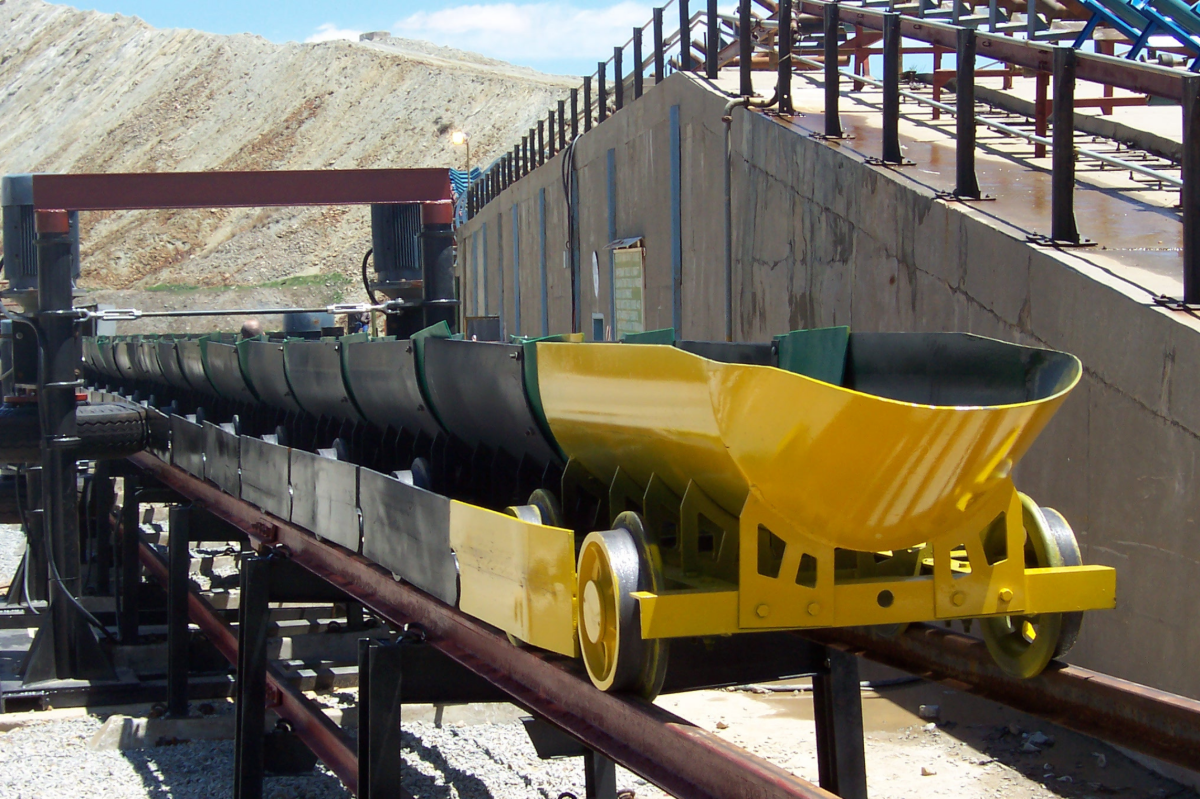 Railveyor system at Harmony Gold's Phakisa Mine in South Africa
Railveyor system at Harmony Gold's Phakisa Mine in South Africa
© Railveyor
Flexibility as a strategic asset
Across the mining life cycle, from initial development to steady state operations and mine expansions, flexibility of technology is becoming a strategic asset that will define the most successful mines of tomorrow. Materials handling systems that are fixed or require a large footprint, will be a restriction on a mine’s ability to adapt to changing demands.
This implies that future systems will be lighter and easier to install and reconfigure, without extensive and costly earthmoving or ground levelling. In contrast, traditional belt conveyors and large diesel trucks often require significant drift development and ongoing costly maintenance which can increase initial capex and result in significant sustaining capex and opex.
The cost of extensive concrete work and steel work that underpins these systems can be considerable, raising capex and further delaying the return on investment. Once in place, they are expected to operate on a fixed route – and to the pre-planned specifications – for many years. The challenge, however, is that the volatility of mining markets often demands a more rapid response to changing conditions.
Power of electrification
A key driver of mining’s decarbonization is a growing shift toward electrification across operations. The application of electrical energy provides a powerful answer to many sustainability concerns, especially as the world moves more deliberately towards greener electricity generation through wind and solar power.
Across the mining sector, companies are actively lowering their Scope 2 carbon emissions by turning to renewable electricity sources. In countries like Canada, much of the electricity is already generated by hydropower – but in countries with predominantly coal-fired grid power, many mines are turning to wind and solar energy providers.
Electrification of haulage and materials handling allows mines to take greater advantage of these renewable energy opportunities. Electrically powered equipment is nothing new in both open-cast and underground mines, and there is ongoing research and development on this front – with battery electric vehicles and hybrid systems among the solutions gaining traction.
Transitioning to more electric operations also helps mines gain greater cost predictability and control. Unlike diesel, electricity prices tend to be far less volatile. Energy sourced from a national grid is generally stable and predictable; in many cases, mines secure long-term supply agreements with power providers at fixed rates. This price stability enables more accurate financial planning, fostering greater confidence among investors and lenders.
Better flow through digital control
Beyond serving as a cleaner energy source for haulage and materials handling functions, electricity is also paving the way for mining’s digital revolution – accelerating the development of smart mines. Just as metallurgical plants are increasingly operated using process logic to ensure smooth, sequential workflows, mines are now aiming to apply the same principle to haulage and materials handling systems.
Traditional haulage systems such as trucks are characterised by working in “bursts” – moving, stopping, waiting and idling – rather than in a flow. The digital shift is accelerating the potential for mines to automate operations while maintaining the highest levels of safety. At the most basic level, this automation removes personnel from hazardous zones where material and equipment are moving – creating a safer working environment. The absence of people from these zones can also reduce the need for additional safety measures and facilitate higher equipment efficiency.
Equally important, automation allows the mine’s haulage and materials handling system to mirror the logic of the process plant, by adapting to demand, increasing throughput, and reducing emissions. This is made possible by smart technologies that generate, compile and analyse vast amounts of data from the equipment’s operation – and use that information to make intelligent decisions that enhance productivity and energy efficiency.
With minimal human input, these systems constantly adapt to ensure continuity, by reducing idle time of equipment and alleviating performance bottlenecks. They also monitor the condition of individual components so that disruptive breakdowns are avoided. Predictive maintenance is becoming another pillar of efficient haulage and materials handling systems, and as such is a critical feature for future solutions in mining operations.
Beyond transportation
With innovations like the “digital twin”, digital technology is making mine operations more transparent. It is helping operators see the connections between the many processes happening on site at the same time. Materials handling systems of the future will need to offer the same level of visibility – and be capable of self-regulation.
 Tas Mohamed, CEO at Railveyor Technologies Inc.
Tas Mohamed, CEO at Railveyor Technologies Inc.
© Railveyor
In this way, these systems will provide more than transportation methods for mined material. They will be productivity enablers that deliver their own cost efficiencies. Future technologies will need to help mines reduce operating costs, as well as the cost of missing sustainability goals and regulations. With carbon taxes already in place in many countries – and likely to increase – these costs could become a growing burden for mining operations.
In conclusion, it is a valid assertion to suggest that the mines of today could be designed around haulage and materials handling systems – given the growing pressure to decarbonise and control costs. Such an approach would allow mine planning and site engineers to carefully compare the performance and costs of different systems – from traditional haul trucks, rail systems and belt conveyors to the more recent breakthroughs in light rail and hybrid systems. The results of such a comparison may be surprising, opening the door to more cost-efficient and sustainable options for the future of mining.
Author: Tas Mohamed, CEO at Railveyor Technologies Inc.
www.railveyor.com

